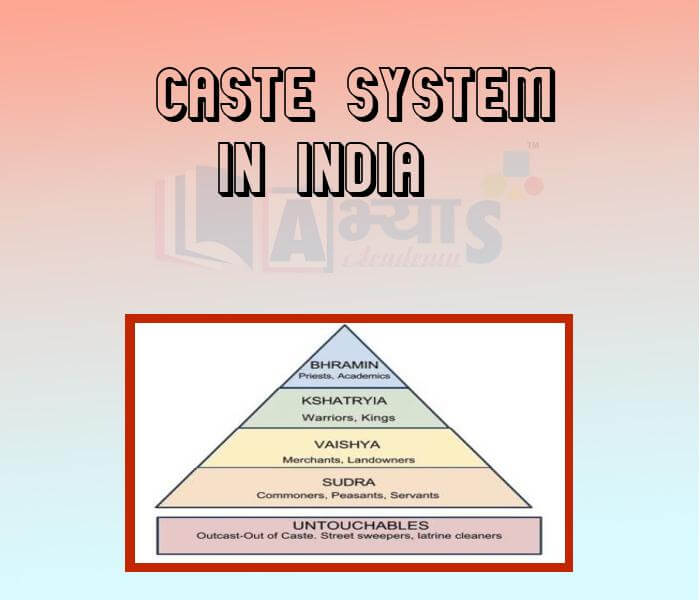Caste System in India












Caste System in India
Caste System In India: In most regions, people were divided along lines of caste. Brahmans and Kshatriyas considered themselves as “upper castes”. other, such as traders and moneylenders (often referred to as vaishyas) were placed after them. Then came peasants, and artisans such as weavers and potters (referred to as shudras) At the lowest rung were those who labored to keep cities and villages clean or worked a job that upper castes considered “polluting”, that is, it could lead to the loss of caste status. The upper castes also treated many of these groups at the bottom as “untouchable”. They were not allowed to enter temples, draw water from the wells used by the upper castes, or bathe in ponds where upper castes bathed. They were seen as inferior human being. Women across the world have been exploited and oppressed for centuries. This way particularly true of 17th and 18th century india. In the 19th century , Indians exposed to western ideas and thought understood that no society could progress until the women of that society progressed. An educated women, especially an educated mother, had a powerful influence on society. Women formed half the population of any country.
Students / Parents Reviews [10]
It was good as the experience because as we had come here we had been improved in a such envirnment created here.Extra is taught which is beneficial for future.

Eshan Arora
8thAbhyas is a complete education Institute. Here extreme care is taken by teacher with the help of regular exam. Extra classes also conducted by the institute, if the student is weak.

Om Umang
10thBeing a parent, I saw my daughter improvement in her studies by seeing a good result in all day to day compititive exam TMO, NSO, IEO etc and as well as studies. I have got a fruitful result from my daughter.

Prisha Gupta
8thAbout Abhyas metholodology the teachers are very nice and hardworking toward students.The Centre Head Mrs Anu Sethi is also a brilliant teacher.Abhyas has taught me how to overcome problems and has always taken my doubts and suppoeted me.

Shreya Shrivastava
8thAbhyas Methodology is very good. It is based on according to student and each child manages accordingly to its properly. Methodology has improved the abilities of students to shine them in future.

Manish Kumar
10thA marvelous experience with Abhyas. I am glad to share that my ward has achieved more than enough at the Ambala ABHYAS centre. Years have passed on and more and more he has gained. May the centre flourish and develop day by day by the grace of God.

Archit Segal
7thIt was a good experience with Abhyas Academy. I even faced problems in starting but slowly and steadily overcomed. Especially reasoning classes helped me a lot.

Cheshta
10thI have spent a wonderful time in Abhyas academy. It has made my reasoning more apt, English more stronger and Maths an interesting subject for me. It has given me a habbit of self studying

Yatharthi Sharma
10thIt has a great methodology. Students here can get analysis to their test quickly.We can learn easily through PPTs and the testing methods are good. We know that where we have to practice

Barkha Arora
10thMy experience was very good with Abhyas academy. I am studying here from 6th class and I am satisfied by its results in my life. I improved a lot here ahead of school syllabus.
